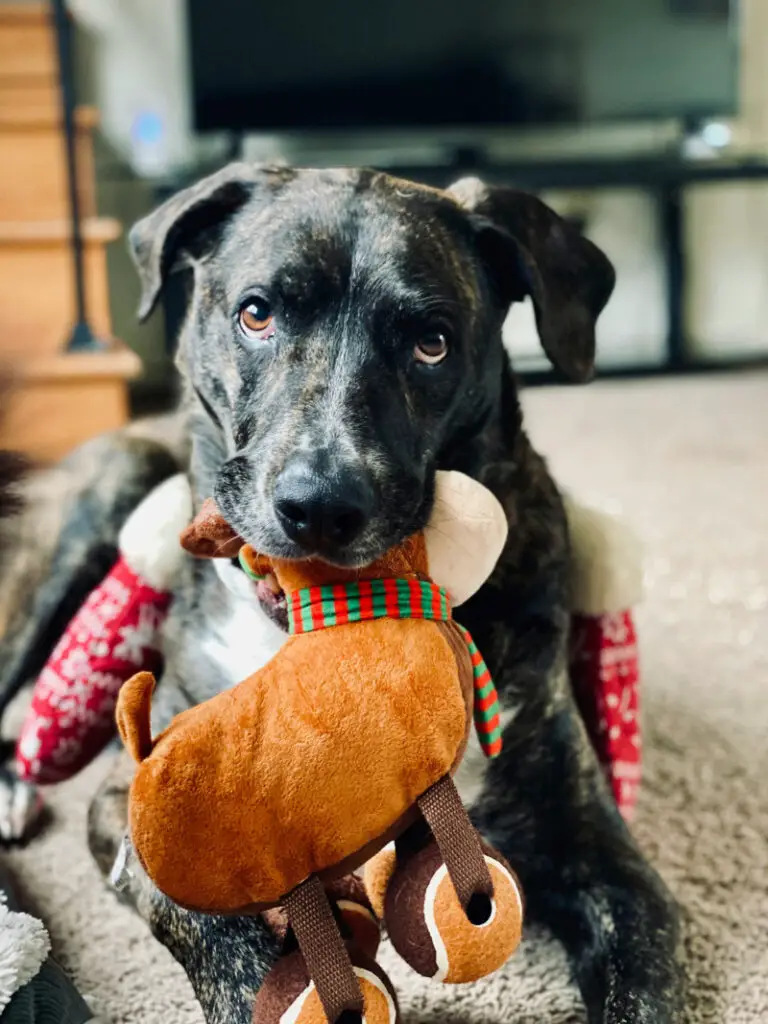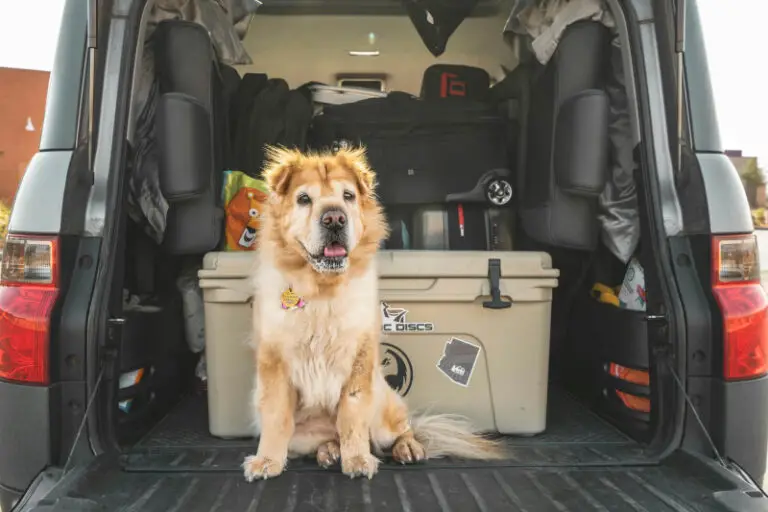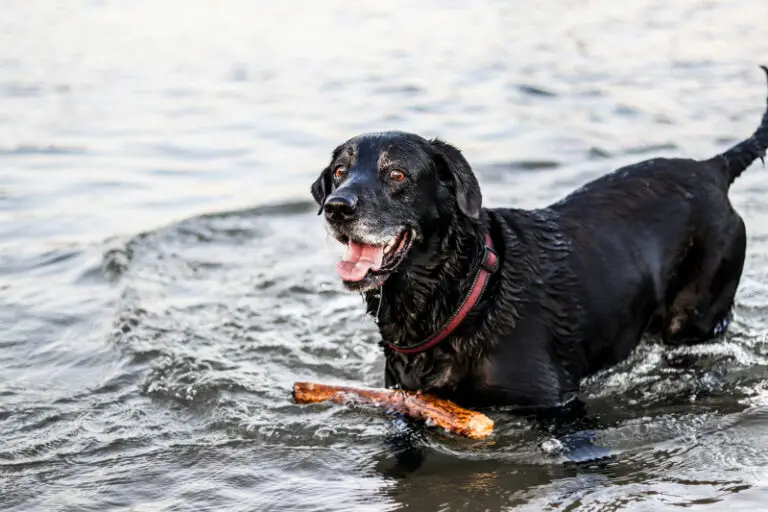Most dogs are characterized by eating with a great appetite. The normal thing is that they devour any food without hesitation. However, it may be the case that a dog does not want to eat, as usual, causing some degree of concern and uncertainty.
Is it normal for a dog not to want to eat food? What to do when a dog loses its appetite?
Table of Contents
Why do dogs stop eating?
As the owner of a dog that refuses to eat, the first thing is to try to identify the cause (and severity) of what is happening. To this end, it is worth considering the following aspects:
- How long has it been since the dog stopped eating?
- How long has the dog been eating the current type of food?
- Are there other symptoms, such as vomiting, diarrhea, or lethargy?
- If you have other dogs, do they also refuse to eat?
- Has the dog stopped drinking water?
Just like in people, there are a wide variety of reasons why a dog might stop eating. These are the 10 most common causes:
- Illness
- Behavior and environment problems
- Dental problems
- Stomach ache
- Separation anxiety
- Food problems
- A recent change in diet
- Vaccination or medication
- Supercharging
- Bad habits
Delving a little deeper into each of these scenarios can help you pinpoint the source of what’s going on with your dog…
1. Disease
A decreased or lack of appetite in dogs is often a sign of illness, especially if it is accompanied by other symptoms. Infections, pain, allergies, depression, heart, kidney, and liver problems, tumors, and poisoning are some of the conditions that make a dog sad, listless, and unwilling to eat.
In case of serious untreated illness, the pet may refuse to eat for a long time. This can lead to weight loss and additional complications.
If it is suspected that a dog has stopped eating due to illness, it is best to consult the veterinarian immediately.
2. Behavior and environmental problems
Some dogs may like to eat alone, or conversely, only when someone else is in the room. The dog may even be used to being hand-fed. Any variation in their routine or environment, for example, the absence of a family member or another pet, the change of bowl, or a change in feeding schedule, can cause a lack of appetite.
3. Dental problems
Dogs are prone to a variety of dental problems, many of which often go unnoticed. Broken or loose teeth, gingivitis, periodontal disease, and oral tumors can cause pain when eating, hence the dog’s preference to avoid food. This is especially true if fed dry kibble.
4. Upset stomach
A dog may experience gastrointestinal problems and not want to eat anything after ingesting something inappropriate. Even well-trained dogs are tempted to eat garbage, bugs, and other seemingly tasty items.
When this happens, it is normal for the pet to have stomach pains and try to get rid of what he has eaten. He could have vomiting, diarrhea, or start eating grass. Generally, the dog will not want to eat until relieved.
5. Separation anxiety
Does your dog not want to eat when he is home alone? One reason could be separation anxiety. Maybe he doesn’t eat because he misses his owner, he feels sad, stressed, or depressed. Consider anxiety as the most likely cause if the dog gobbles up his food once you get home.
6. Problems with food
It seems obvious, but many owners do not realize that the problem may be the feed. This is another key aspect to consider when your dog suddenly stops eating.
First of all, it is recommended to check if the food is spoiled. Although dog foods typically have a long shelf life, that doesn’t mean they can’t go stale or rancid. Dogs can tell when food is not good, in which case they will avoid it.
Likewise, your furry friend may not want to eat because the formula of his regular food is no longer exactly the same. Check the list of ingredients and their respective concentrations in the food to discover possible variations.
7. Recent change in diet
Have you made any changes to the dog’s diet in the last few days? Introducing a new brand or new ingredients, switching from wet food to dry food and vice versa, or making any other dietary change can result in a dog that won’t eat at all. He may not like the smell, taste, texture, or temperature of what you’re offering him.
Interestingly, poor appetite can sometimes occur because no changes have been made in a long time. Some dogs have been known to stop eating their usual food out of boredom.
8. Vaccination or medication
Vaccines and medications are essential to protect the good health of our dogs. However, many of the common drugs have unwanted side effects. Lack of appetite is one of them. It is normal for a dog not to feel like eating if it has recently been vaccinated or undergoing treatment. Luckily, it is a temporary effect (1 or 2 days).
9. Overfeeding
Treats are a great way to reward your puppy, but if left unchecked, their consumption can affect their feeding routine. Dogs that eat more treats than they should in a day can end up refusing their food. In this case, the pet does not stop eating because of lack of appetite, but because her appetite has already been satiated.
10. Bad habits
Getting your dog used to eating snacks from your table can be very counterproductive in the long run. A dog can stop eating dog food if he has already become accustomed to human food. Over time, the pet assumes that his food is his owner’s food.
Remember…
Considering that dogs can stop eating when they are sick, it is important to seek veterinary attention for sudden and unexplained lack of appetite, especially if the dog is used to eating with great appetite.
What to do when a dog does not want to eat?
With so many potential causes, it can be difficult and a bit overwhelming to take action to fix the problem. If your dog hasn’t wanted to eat for a while, there are some steps you should take to understand what’s happening and get him to eat normally again.
Monitor their behavior
Monitoring the dog’s behavior is crucial.
Pay attention to his behavior from the first moment he refuses food. If you notice any other changes in their usual behavior, take note. Not wanting to eat can be an early sign of problems that will continue to develop over time.
It’s also a good idea to monitor your water intake.
Check the environment
Checking the surroundings can help you uncover clues, such as if the dog has been rummaging through the garbage, has chewed on something inappropriate (medications, objects, food not suitable for dogs), or has gotten into the cat’s litter box.
Inspect the body
Performing a complete physical exam on your dog can help you determine if you need to see a vet. Comb its fur for insects, parasites, inspect its ears, and press its belly to check that it is smooth and there are no lumps. If the pet reacts to touching a specific area, it may feel pain.
Examine teeth
Look for any obvious signs of dental pain such as swollen gums, bleeding, or loose teeth. Make sure there is no gum discoloration or influx of mucus.
Check dog food
Sniffing and examining the dog’s food for any problems is always recommended. Even if the product is freshly opened, it may be rancid or moldy. Also, check the ingredient list to make sure what’s in it.
Change diet
You may need to change the type of feed you have been using. On its own, this step can do wonders to restore appetite and get the dog to eat. It is recommended to do it slowly to avoid sudden digestive problems.
Develop and maintain good habits
If you suspect that loss of appetite is associated with a behavioral problem, the key is to establish and maintain healthy habits. Provide a safe and comfortable space to eat; set a regular schedule every day; avoid giving him morsels of human food; reduce the number of treats, etc.
Consult the vet
If after making various adjustments, the dog still does not want to taste the food, it is best to consult the veterinarian. They can do a more detailed exam and help you figure out the source of the problem.
9 Tips to get an inappetent dog to eat again
When a dog doesn’t want to eat but is acting normal, chances are he isn’t sick and his lack of appetite can be easily fixed.
How to get my dog to eat again?
1. Try rotating between various dog foods
Let your dog try different flavors and textures. For example, mix a part of wet food with dry food, or alternate between both variants separately to see which one appeals to him the most. Be sure to make the changes gradually, as doing so could cause an upset stomach.
2. Add a dressing to your food
There are some foods that can make the dog’s food more smelly and appetizing. For example, low-sodium chicken broth, low-fat plain yogurt, baby food, applesauce. If you prefer, simply buy a special seasoning for dogs.
3. Add appetizing foods
A very effective way to make the dog eat its feed is to mix it with some strategic food. It could be a piece of cooked chicken, meat, fish, egg, or liver, small pieces of steamed vegetables (carrots, green beans, broccoli), a tablespoon of mashed pumpkin, or sweet potato, etc.
4. Add spices
Dog-friendly spices can also stimulate your pet’s appetite. Add a pinch of parsley, turmeric, basil, or cinnamon to your food to see if the trick works. Make sure you don’t give him any potentially toxic seasonings/ingredients, like onions, garlic, cocoa, or salt.
5. Heat the food
Apparently, some dogs prefer to eat their food lukewarmly. If your furry friend refuses to eat, mix his food with a tablespoon of broth or warm water, or just heat it up a bit in the microwave. Check that it is not too hot before offering it.
6. Go for a walk before meals
Several experts recommend exercising the dog before feeding it. Taking a walk just before feeding can be a good stimulant for dogs with poor appetite.
7. Feed at consistent times
Timing is one of the most important aspects of maintaining healthy eating patterns. Divide the food into 2 or 3 portions and serve them at the same time each day. Reducing the number of treats can also help a lot in this regard.
8. Use food dispensing toys
This type of toy is a great alternative to arouse the dog’s interest. Instead of serving him in his usual dish, put the food in the toy and let him follow his instincts.
9. Modify the eating experience
Serve the dog’s food in a different bowl, one that is taller, shorter, or wider than usual, and place it in another part of the house. Also, you can put some pieces of food on the floor near the plate.



